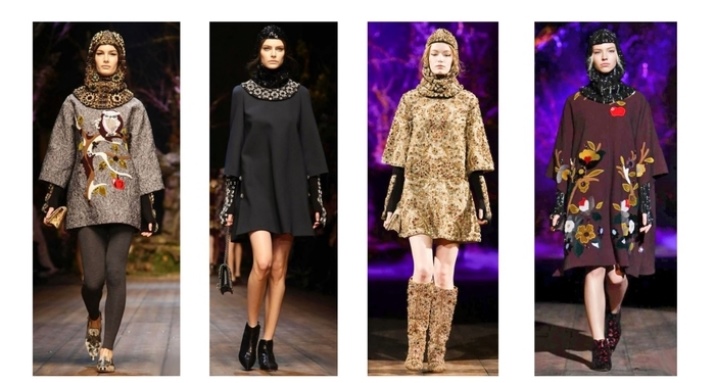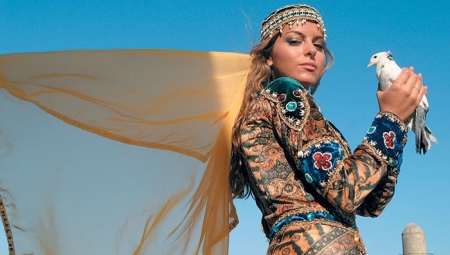Each nation has its own story, which consists of many moments: culture, cuisine, language, costumes. The history of Azerbaijan is interesting, fascinating, sometimes sad and tragic. An important place in the history of this people is clothing. The Azerbaijani national costume stands out for its extraordinary beauty, which skillfully combines with the national characteristics of the inhabitants of sunny Azerbaijan. Throughout the entire period of the costume's existence, he underwent numerous changes.

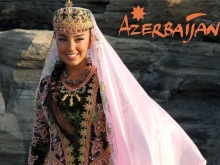
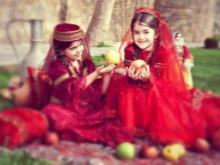
Features
Costumes of any nation have unique features that are distinctive features. Azerbaijani costumes are no exception.
Shades of red are necessarily present in the national clothes of Azerbaijanis. This color symbolizes well-being, happiness, passion and grace. Even now, this color must be present in wedding dresses. The clothes of the young girls were bright, colorful, with patterns in gold color.
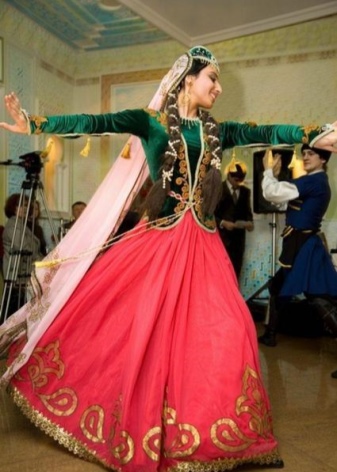
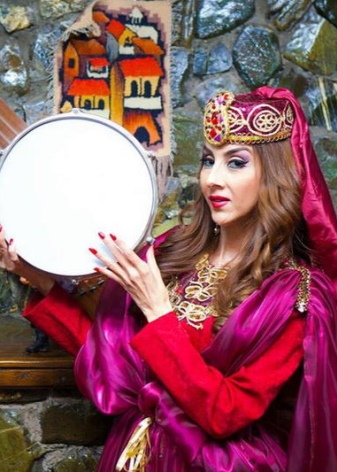
Different materials were chosen: imported and local. The most commonly used silk. When creating everyday clothing, flax, wool and chintz were preferred. The outfits of rich people consisted of velvet, cloth, tirmé, fine silk.
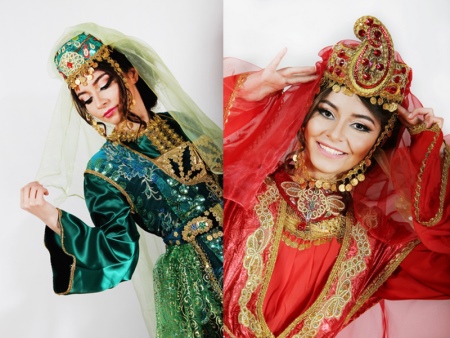
The finish has always been artful and expressive. Even a simple suit in the skilled hands of a craftswoman took an expensive look. For decoration, gold, silver threads, beads, lace, braid, expensive coins were used.
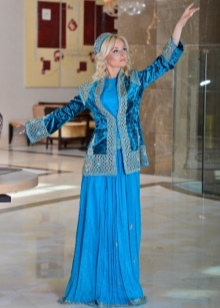
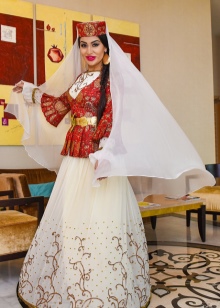
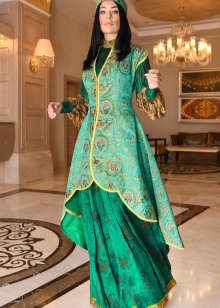
Varieties of women's costume
Women's costume consisted of two parts and a large number of elements with complex and strange names.Let's try to understand them and imagine the image of an Azerbaijani woman who lived several centuries ago.
- The veil is a bag-like bedspread that was worn when leaving the house.
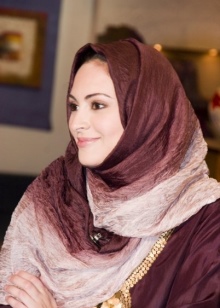


- Rubend is an element that covered the face of a woman. At home, this element was not worn, but it was forbidden to leave the house without it.
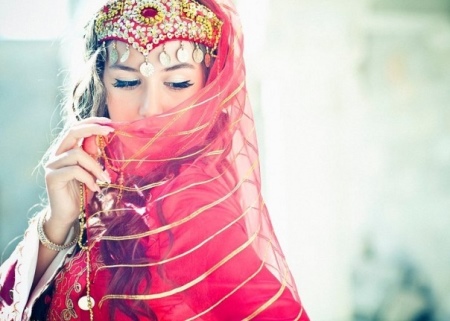
- Goyimi mouth - the so-called outerwear, which included a shirt with wide sleeves, wide harem pants, ending at the ankle level, a flared skirt.
- Chepken was put on top of a shirt, which, in turn, was fastened on the neck with one button. On the side in chepken there were sleeves with sleeves. To create this clothing, velor, curtain and other materials with a shiny texture were used.


- Arkhalyg is a short jacket that fit your back and chest. The sleeves in such clothes were long. In the waist area, this jacket pulled together, and then it was lush and diverged with lush frills. This element of the national costume was considered the most common throughout the country.
- As the lower part of the costume, a hem was used, which could have a different width. To create a hem, pleated and corrugated materials were used.
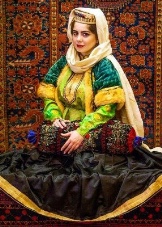

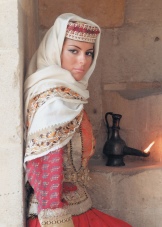
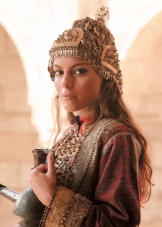
- In addition to such standard elements, other clothes could be present in the national Azerbaijani costume. For example, a quilted robe with lining (lebbade), outerwear made of quilted material (ashmek or cjurd), outerwear to the waist with a hem made of corrugated material.
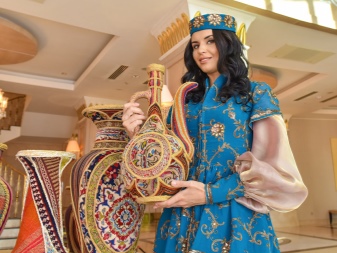
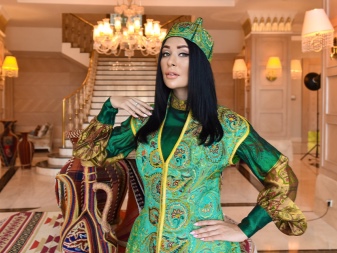
Costume differences by region
Throughout the entire period of existence, the national Azerbaijani costume had differences in outfits according to the regional indicator. Women who lived in Gazakha wore long shirts with side cuts. The residents of Karabakh in the wardrobe were present with long sleeves that fit tightly around the waist.
Skirts no lower than knees and wide harem pants were worn by women from Nakhchivan. But the residents of Shushe and Shamakhi wore long skirts. On wealthy women from Nakhchivan and Ganja, one could often see long kuleges with rich embroidery and different patterns.

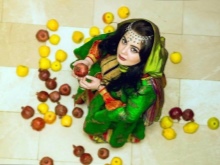

Accessories
The nature of any outfit is in accessories. It is they who are able to set the necessary accents, set the general style and highlight the dignity of a woman. Women of Azerbaijan with special trepidation belonged to accessories.
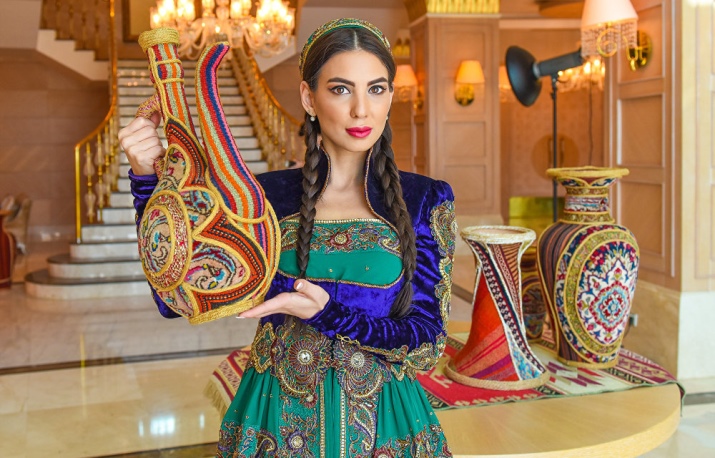
- A silver one with gilding or a golden belt was worn over outer clothing (arkhalyg, chepken). Also often found a leather belt, embroidered with coins or decorated with a badge. Only married women were allowed to wear a belt. The girl at the wedding received her first belt as a present.

- The headgear was of particular importance. Hats were created in various forms. Top scarves could be worn. Hair was hidden in a special linen bag called “chutgu”. A hat in the shape of a cylinder was put on the head, most often it was velvet. A turban and scarfs were tied over the hats. Kelagai, a silk scarf, was especially popular. There were several ways to tie it. In the cold season, Kashmiri shawl was added, to create which exclusively natural wool was used.
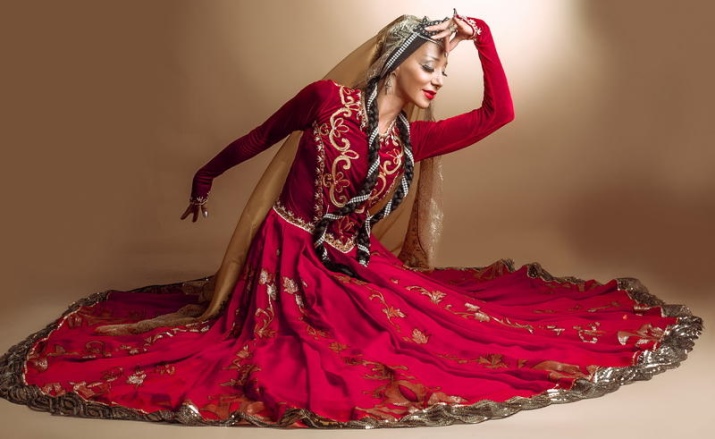
- On the feet there were Joraba stockings and shoes with a sharp toe, without a back, with a small heel. These shoes were part of the summer wardrobe, and in the winter, hucksters were used. Stockings were created with wool or cotton thread. Along the entire length, there were a large number of patterns and drawings that were similar to those that were present on the carpets.
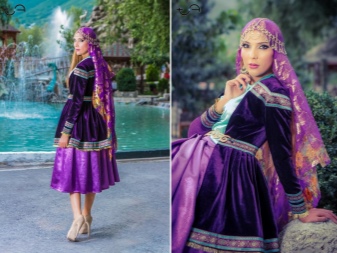
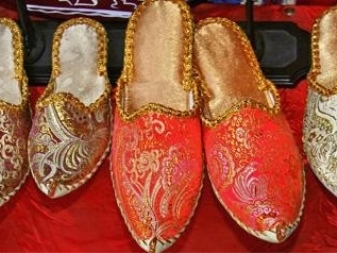
- The girl’s jewelry began to be worn from 3 years old, they were perceived for the most part as a talisman from a bad word and look. Until the moment when the girl was about to become a married woman, a whole collection of jewelry managed to gather. Not all of them could be worn.For example, during a religious ceremony, for 40 days after the death or birth of a child. Rich and poor women wore roughly the same jewelry, the difference was only in the presence of precious stones.
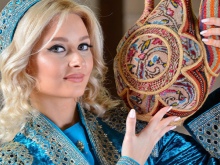
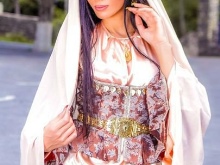

Features of men's suit
The Azerbaijani men's suit consisted of a shirt, trousers, a beshmet, narrowed in the waist area, and a sheepskin coat, which was used in cold weather. Cherkeske was given special attention, she put on top of a shirt, which, in turn, tucked into his pants. There were boots on the legs, and on the head was a hat, for which a karakul or a sheepskin was chosen.
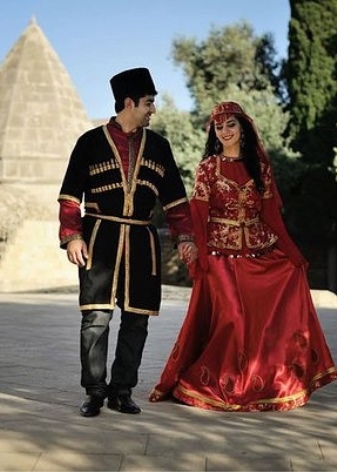
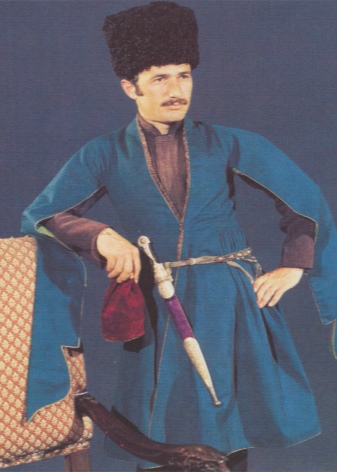
Circassian buttoned on all the buttons, and the sleeves were bent. In the chest area there were special pockets for gas tubes or bullets. These pockets were called gazyrynitsami. Due to the large size of the pockets, the likelihood of serious damage during the application of chopping strikes was reduced. Now these pockets are more decorative than practical.
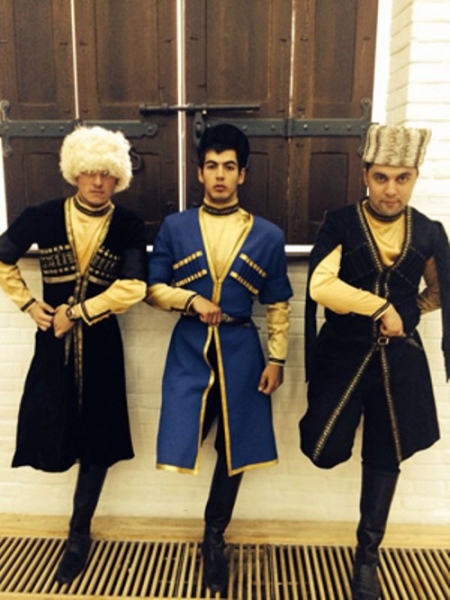
A belt should be present in the costume of an Azerbaijani. Edged weapons were fixed on it.
Azerbaijani costume in modern fashion
Modern young people no longer wear national costumes. They went out of fashion before the onset of the twentieth century. Now national costumes are used in theatrical productions and in museum displays.
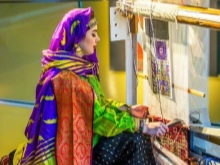
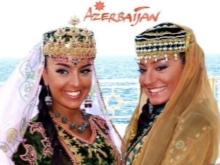
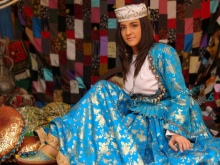
The national Azerbaijani costume is of great interest to European designers. In modern collections that appear on European catwalks, elements from the national outfit of the Azerbaijani people are increasingly found. Harem pants, long skirts and outerwear became the basis for many collections. Designers of Azerbaijan are just starting to pick up this trend.
